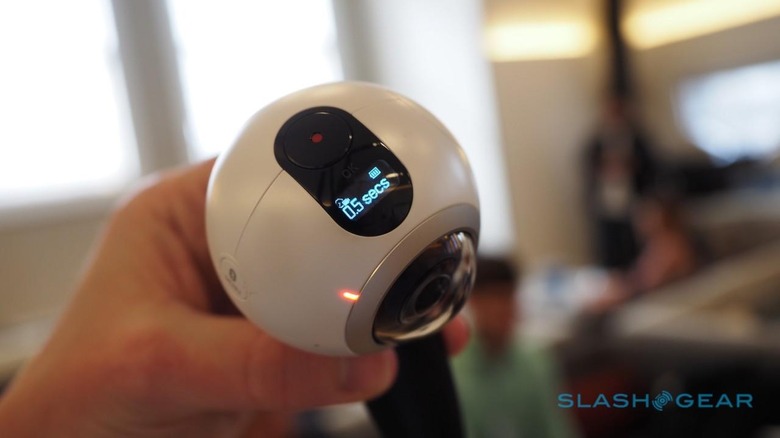Samsung Gear 360 Arrives In US (But You Probably Can't Buy It)
Samsung's Gear 360 camera is finally going on sale in the US, but you're almost certainly not able to actually buy one. The 360-degree camera was revealed alongside the Galaxy S7 earlier this year, but until now has only been available for sale in markets outside of the US. Now, Samsung is kicking off sales, but in a very limited way.
In fact, if you want the $349.99 camera – which has lenses on both sides, and can shoot both 360-degree still photos as well as videos – you'll have to be attending VidCon this week.
A three-day conference focusing on online video, the annual event takes place in California and kicks off on Thursday this week.
Samsung plans to use the event to launch its Samsung Creators project, intended to help educate film-makers on how best to use 360-degree video and virtual reality cameras to better tell their stories. That'll include tutorials and classes on best-practice and where to share VR and 360 content, such as on YouTube.
Le Mans in the 2017 Audi S4, shot on the Samsung Gear 360:
As for when the rest of the US might be able to get their hands on the Gear 360, Samsung says it will only spill the beans on that "later in the year."
Still, it may very well be worth waiting for. The roughly golfball-sized camera has two f/2.0 lenses that together capture up to roughly 30-megapixel photos or 3840 x 1920 video.
Several shooting modes are supported, including timelapse, and it's splashproof (though not fully waterproof) to survive a little rough & tumble. Samsung bundles it with a small tripod, but there's a regular tripod mounting screw on the base so you could feasibly put it on a car or motorcycle clamp, or on a helmet.

The democratization of 360-degree video and virtual reality is something not only Samsung is working on, with LG also having a 360-degree camera that works with the G5 smartphone among other devices, while Ricoh has been pushing 360 for some years now, most recently with the Theta S.
NOW READ: Samsung Gear 360 hands-on
Meanwhile, Facebook turned on support for 360-degree photos in the timeline, which can either be swiped with a finger or – if you're viewing them on a smartphone – viewed by physically moving the device around.
